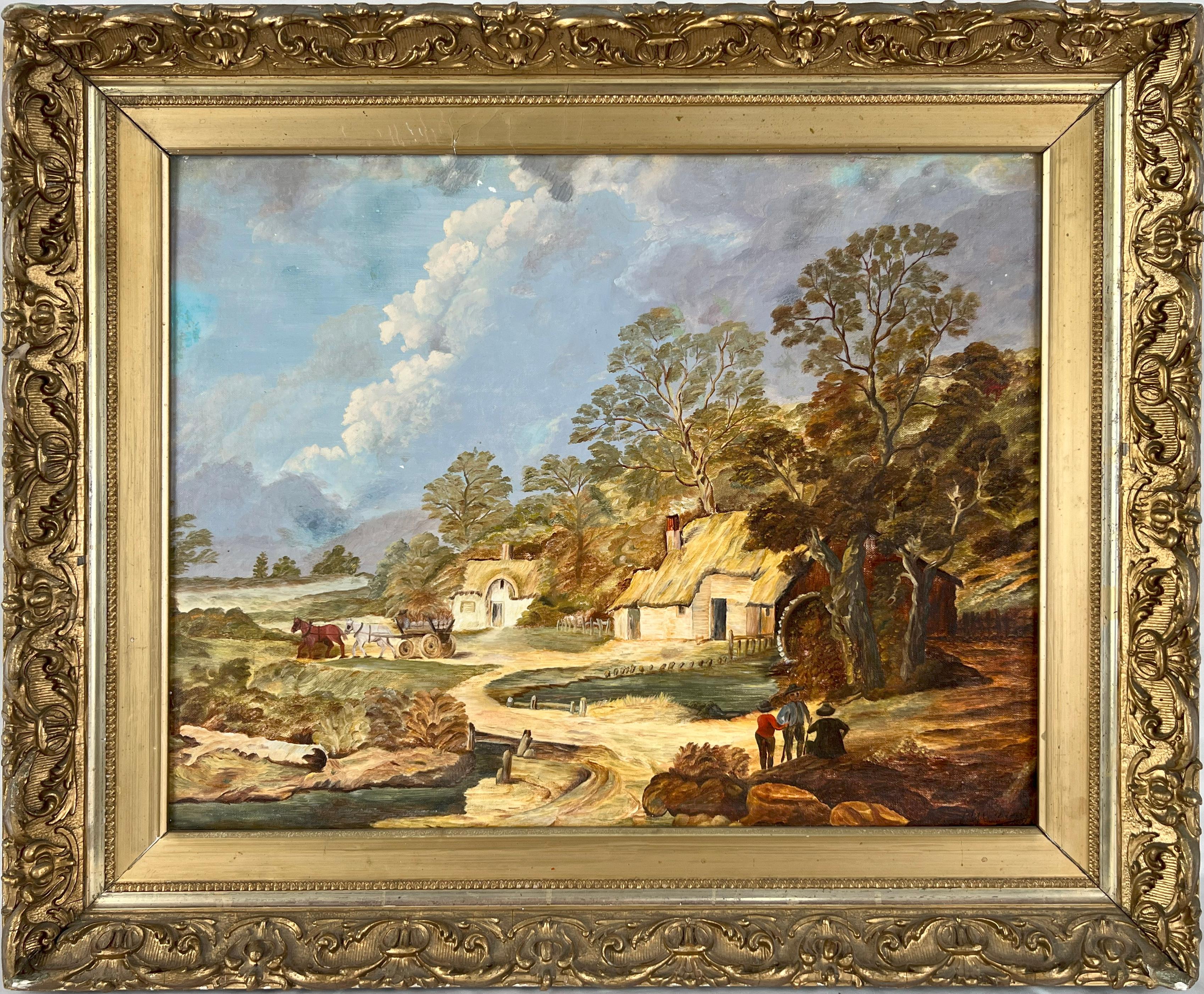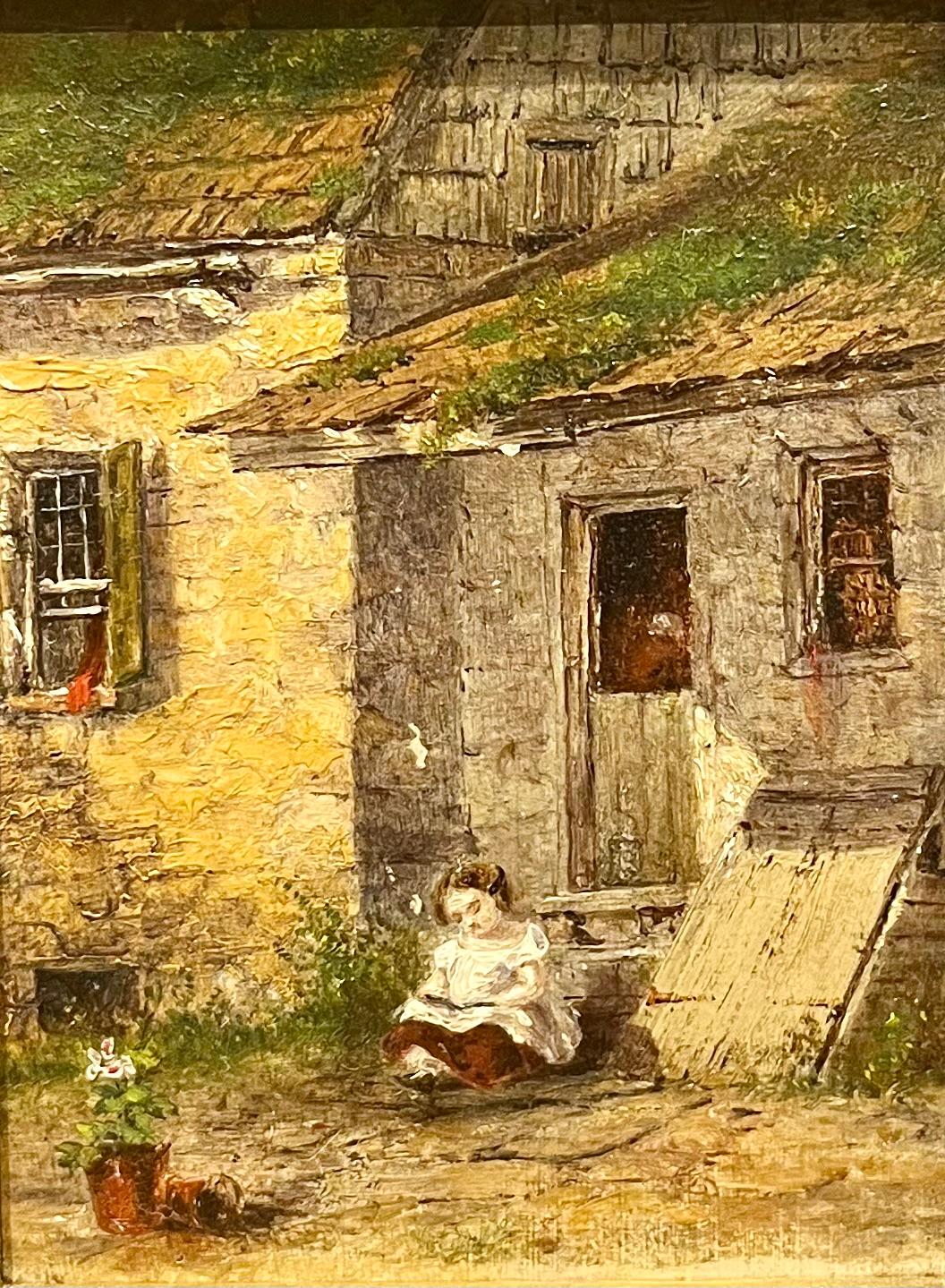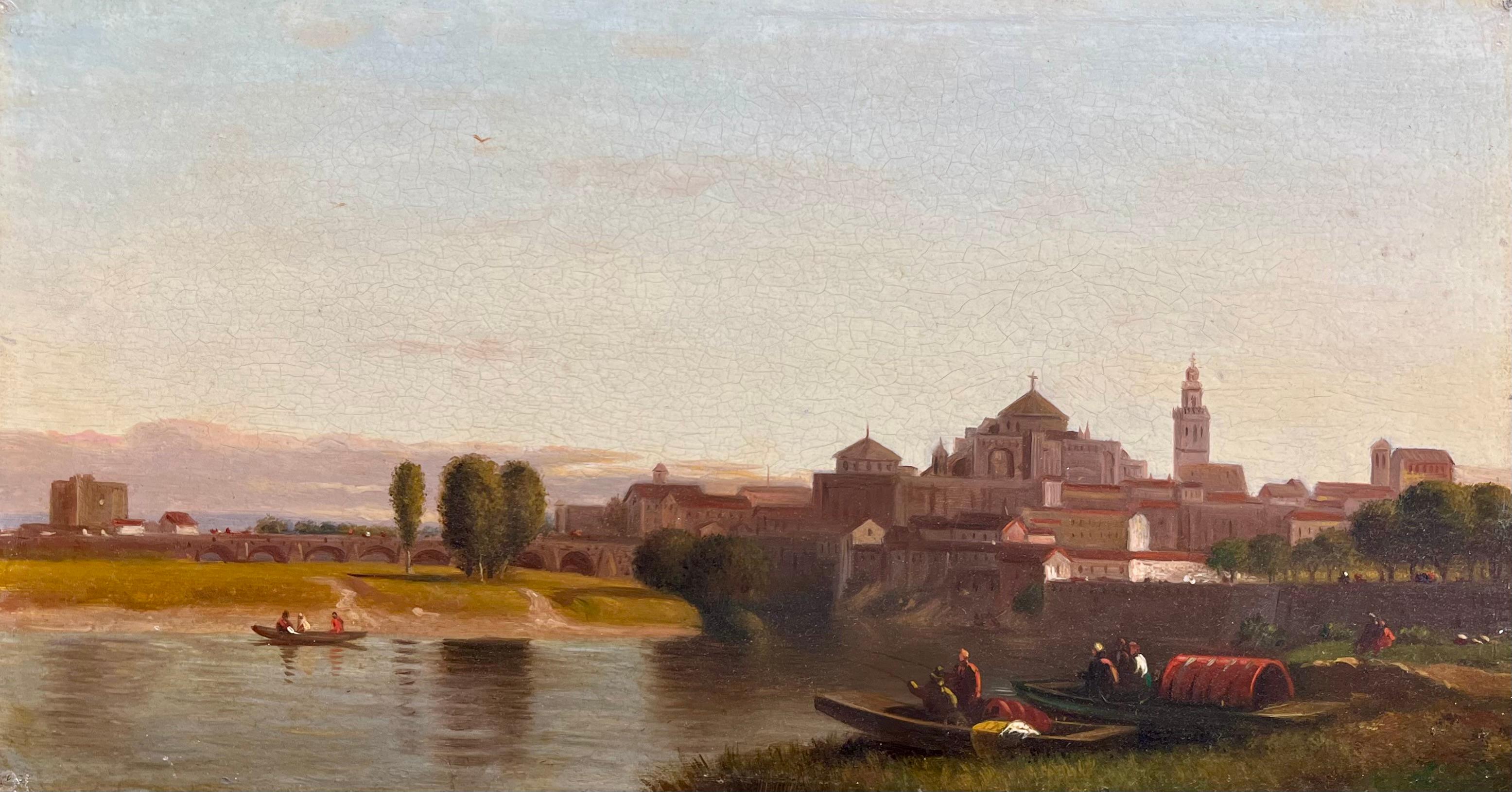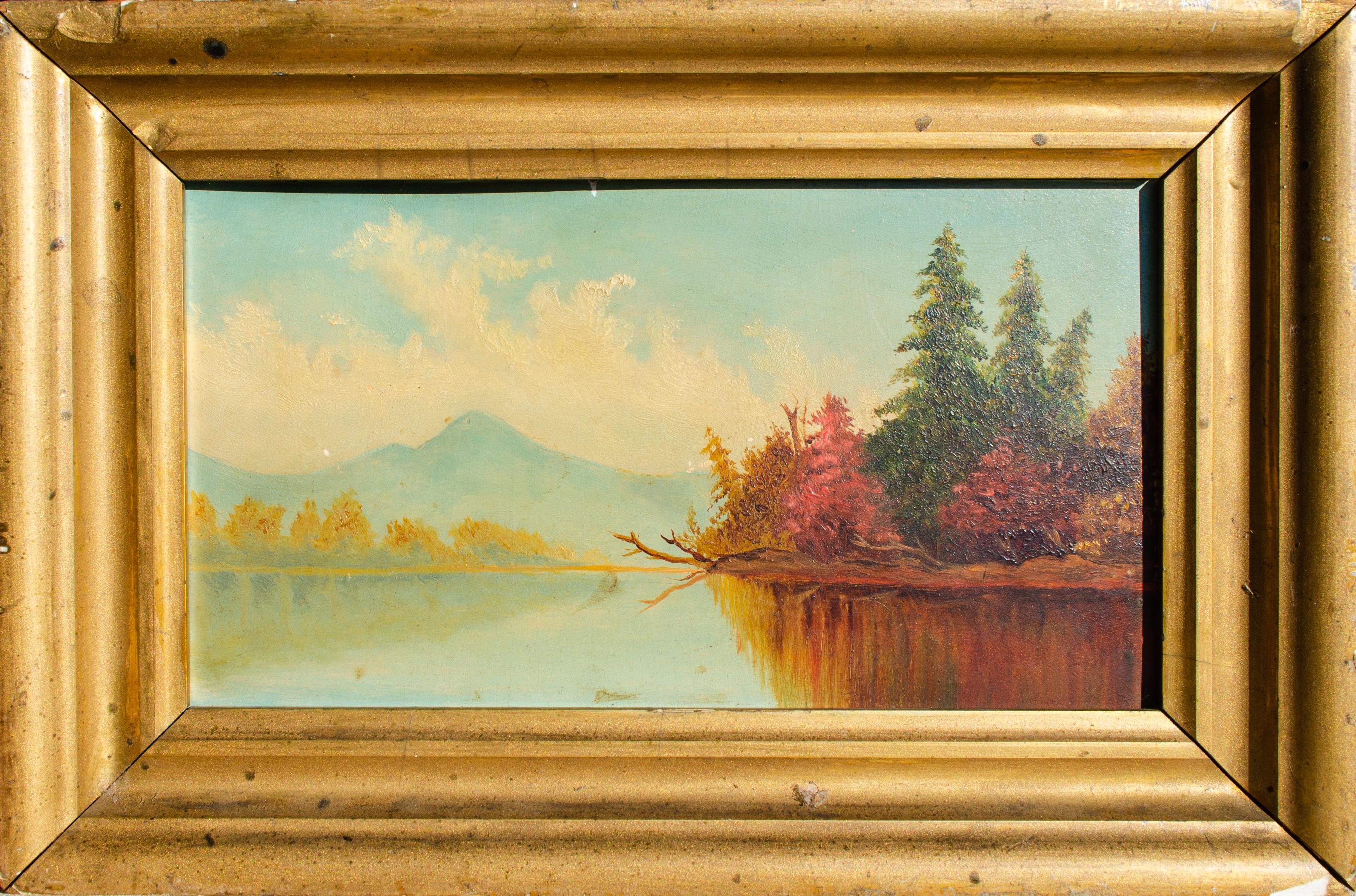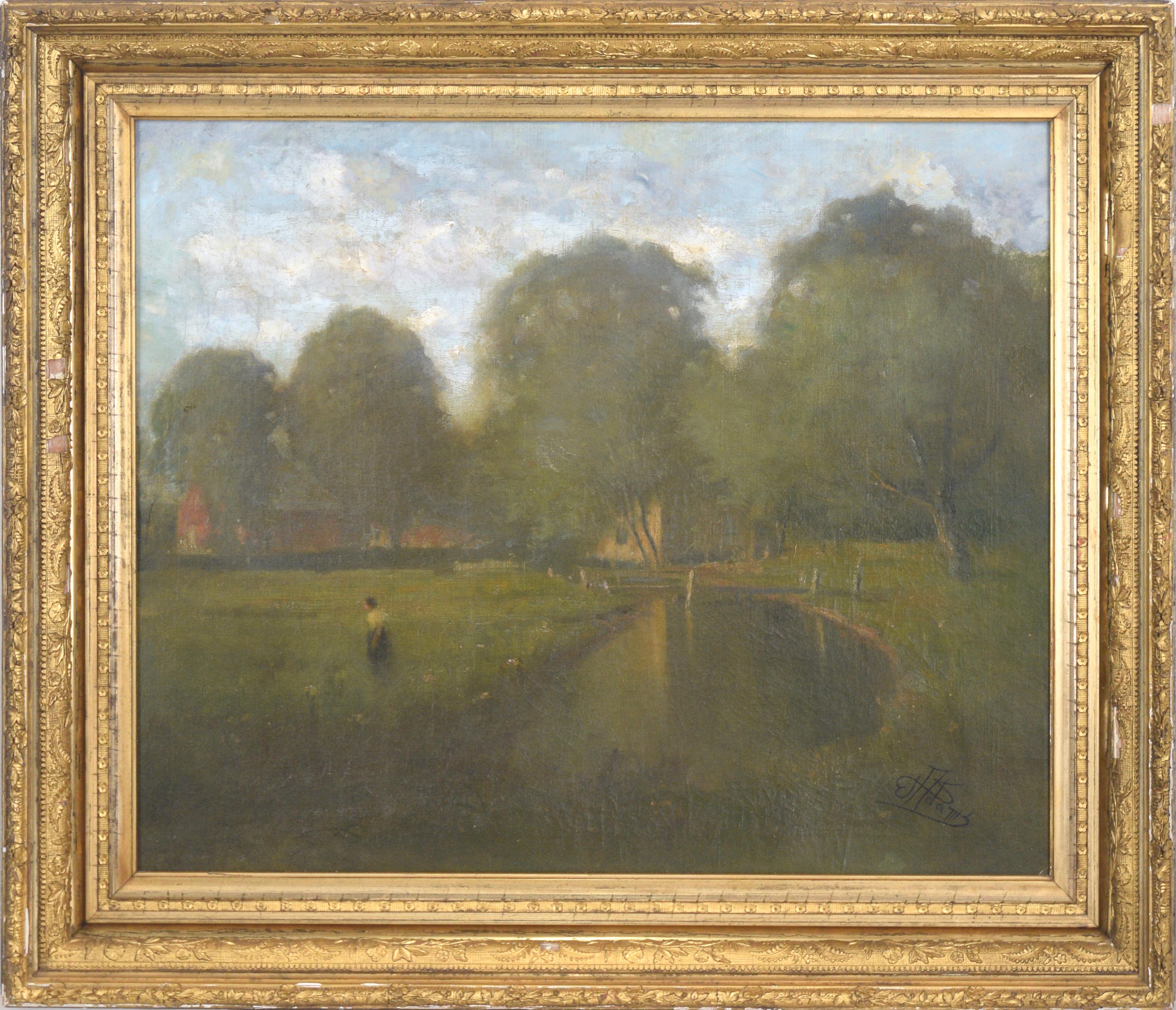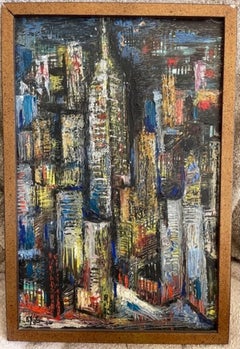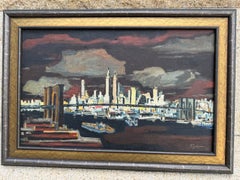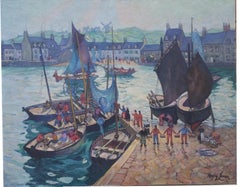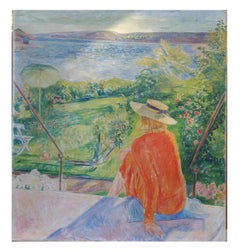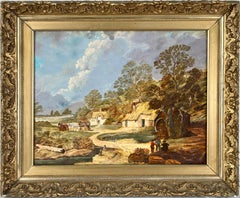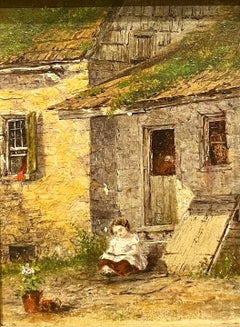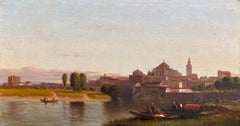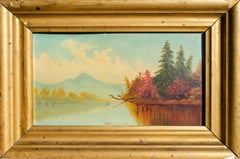Items Similar to The Columbian Exhibition, the 1893 Chicago World’s Fair
Want more images or videos?
Request additional images or videos from the seller
1 of 6
Thaddeus WelchThe Columbian Exhibition, the 1893 Chicago World’s Fair
About the Item
Thaddeus Welch (American 1844-1919)
The Columbian Exhibition, the 1893 Chicago World’s Fair
70 x 35”, oil on board signed
Request Price
The Chicago world’s Fair of 1893 was billed as the great art, cultural and technology event of the 19th century. On display were the achievements of modern civilization. The building of the fair cost over 20 million dollars. In today’s money, nearly three quarters of a billion dollars. It was a supreme event which showed America’s progress. The buildings were classically inspired and included 65,000 exhibits, spanning nearly 700 acres. The fair drew 27 million visitors. The fair exhibition was built to celebrate the 400th year of Columbus’s voyage and America’s progress.
Thousands of paintings, watercolors, drawings, prints, and sculpture were exhibited at the fair from many countries. Eakins, Twachtman, Homer, and Tiffany where among the hundreds of artists displayed from the United States, which exhibited nearly 3,000 art pieces. Works by French Impressionists—including Degas, Manet, Pissarro, Sisley and Monet were on display along with hundreds of other works by French artists. Artists from multiple countries where exhibited at the Palace of Fine Arts.
Thaddeus Welch spent time in Chicago during the time of the fair. Two other similar large depictions of the fair, from different perspectives and vantage points, belong to the Oakland Museum of California.
- Creator:Thaddeus Welch (1834 - 1919)
- Dimensions:Height: 35 in (88.9 cm)Width: 70 in (177.8 cm)Depth: 3 in (7.62 cm)
- Medium:
- Movement & Style:
- Period:
- Condition:
- Gallery Location:Saratoga Springs, NY
- Reference Number:1stDibs: LU17029098552
About the Seller
4.2
Vetted Professional Seller
Every seller passes strict standards for authenticity and reliability
Established in 1992
1stDibs seller since 2015
30 sales on 1stDibs
Typical response time: 18 hours
- ShippingRetrieving quote...Shipping from: Saratoga Springs, NY
- Return Policy
Authenticity Guarantee
In the unlikely event there’s an issue with an item’s authenticity, contact us within 1 year for a full refund. DetailsMoney-Back Guarantee
If your item is not as described, is damaged in transit, or does not arrive, contact us within 7 days for a full refund. Details24-Hour Cancellation
You have a 24-hour grace period in which to reconsider your purchase, with no questions asked.Vetted Professional Sellers
Our world-class sellers must adhere to strict standards for service and quality, maintaining the integrity of our listings.Price-Match Guarantee
If you find that a seller listed the same item for a lower price elsewhere, we’ll match it.Trusted Global Delivery
Our best-in-class carrier network provides specialized shipping options worldwide, including custom delivery.More From This Seller
View AllImpressions de New York No. 3
Located in Saratoga Springs, NY
David Solot, a dentist and painter, was born in Falciu (Romania) and
settled in Paris in 1928. His art was surrealistic dentally inspired plus
portraits and city landscapes.
****************************
Translated from an article by Luana Hrisanti Rigot:
"In 1956, at the Charlotte Norberg Gallery (Paris), he presented his first personal exhibition, composed of an ensemble of surrealist paintings of professional inspiration (dental elements). Two years later, at Gallery Royale (Rochefort), he exhibits another 50 paintings on the subject. At that time, a decisive event for the painter David Solot was made: a great new-York-born antibiotic producer Lederle Cy learns about his work and contacts him through the US Ambassador to Paris, proposing an advertising contract and buying the reproduction right for 24 of its canvases. A year later, the same company bought the right to print three of its cloths in color. This was the starting point of his international notoriety.
In 1959, the American Dental...
Category
1960s Impressionist Figurative Paintings
Materials
Oil, Board
Brooklyn Bridge, New York
Located in Saratoga Springs, NY
David Solot, a dentist and painter, was born in Falciu (Romania) and
settled in Paris in 1928. His art was surrealistic dentally inspired plus
portraits and city landscapes.
****************************
Translated from an article by Luana Hrisanti Rigot:
"In 1956, at the Charlotte Norberg Gallery (Paris), he presented his first personal exhibition, composed of an ensemble of surrealist paintings of professional inspiration (dental elements). Two years later, at Gallery Royale (Rochefort), he exhibits another 50 paintings on the subject. At that time, a decisive event for the painter David Solot was made: a great new-York-born antibiotic producer Lederle Cy learns about his work and contacts him through the US Ambassador to Paris, proposing an advertising contract and buying the reproduction right for 24 of its canvases. A year later, the same company bought the right to print three of its cloths in color. This was the starting point of his international notoriety.
In 1959, the American Dental...
Category
1960s Impressionist Figurative Paintings
Materials
Oil, Board
Fishing Harbor, Brittiny
By Hayley Lever
Located in Saratoga Springs, NY
Signed lower right and dated 1930.
Lever’s “Fishing Harbor in Brittany” is as much a scene celebrating the boats and quaint architecture of coastal France, as it is a nod to its ...
Category
1930s Post-Impressionist Figurative Paintings
Materials
Canvas, Oil
Price Upon Request
Landscape with Woman in Red
By Arne Kavli
Located in Saratoga Springs, NY
Signed lower left.
A blond woman clad in a red blouse and skirt sits atop a blue blanket at the top of a set of stairs leading to a garden at the edge of a large body of water, with wooded hills in the distant background. Her back is turned from the viewer, her left hand and arm supporting her from behind as she gazes out beyond, her face hidden and sheltered from the sun by a straw hat.
Arne Kavli...
Category
Early 20th Century Impressionist Landscape Paintings
Materials
Canvas, Oil
Price Upon Request
Wall Street New York
By Gail Sherman Corbett
Located in Saratoga Springs, NY
Signed lower right.
Category
Mid-20th Century American Impressionist Figurative Paintings
Materials
Canvas, Oil
The Warning
Located in Saratoga Springs, NY
Edward Lamson Henry (American, (1841 - 1919))
“The Warning”
Grisaille on paper mounted on board, signed lower left ‘E L Henry’ (partially obscured by frame)
...
Category
Late 19th Century Hudson River School Figurative Paintings
Materials
Oil, Board, Laid Paper
You May Also Like
Hudson River School Style - The Homestead and Grist Mill 1942
By A. Mathieu
Located in Soquel, CA
Hudson River School Style - The Homestead and Grist Mill 1942
In the Hudson River School style by A (K) Mathieu (American, 19th-20th C). Harvest time at the Homestead with a hay wago...
Category
1940s Hudson River School Figurative Paintings
Materials
Oil, Illustration Board, Stretcher Bars
$1,480 Sale Price
20% Off
Little Girl Reading by House
By Edward Lamson Henry
Located in Fredericksburg, VA
"Reading After School," attributed to Edward Lamson Henry, offers a glimpse into the everyday moments of 19th-century American life. Known for his meticulous detail and his ability t...
Category
Late 19th Century Hudson River School Figurative Paintings
Materials
Oil, Board
Fishing Along the Meder River at the edge of Vic, Spain
Located in Fredericksburg, VA
Samuel Coleman's "Fishing Along the Meder River at the Edge of Vic, Spain" is a captivating painting that beautifully captures both the charm of the riverside, and the beauty of the ...
Category
Mid-19th Century Hudson River School Landscape Paintings
Materials
Oil, Board
19th Century White Mountain Landscape, Unknown American School
Located in New York, NY
Unknown White Mountain Artist
White Mountain Landscape, 19th Century
Oil on board
5 x 9 1/4 in.
Framed: 7 3/4 x 11 3/4 in.
Category
19th Century Hudson River School Figurative Paintings
Materials
Oil, Board
Late 19th Century Tonalist Landscape -- Afternoon by the Pond
Located in Soquel, CA
Gorgeous tonalist oil painting woman walking in field by pond with home in background by Willis Seaver Adams (American, 1844-1921), circa 1880. Trees and an amazing sky in the background add depth and interest to this beautiful piece. Signed "W. S. Adams" lower right corner. Condition: Previous restoration includes relining of canvas. Frame is vintage gilt molded and wood frame and shows previous repair of molding losses. Image size: 20"H x 24"W.
Auctions records for the artist exceed $6,000.
Willis Seaver Adams was known for his landscapes of the Connecticut River Valley. A relative recluse for much of his artistic life, his loneliness can be seen in much of his works. Oil miniatures were the focus for almost all of his later works. He is credited with over 425 oils, watercolors, and drawings.
Willis Seaver was born in 1844 on a farm in Suffield, near the Connecticut River. He intermittently attended the Suffield Academy, and always wanted to be a painter. A wealthy doctor became his patron, and financed his studies in 1868 at the Royal Academy in Antwerp. When the doctor passed away, Adams returned home and struggled to make a living painting. After working for a photographer for three years, he opened his own studio.
Adams helped organize Cleveland's first watercolor exhibit in 1876. Soon thereafter, he completed a portrait of Rutherford B. Hayes, then governor of Ohio, prior to his becoming President of the United States. This portrait enhanced Adams notoriety.
In 1878, Adams traveled to Italy where he opened a studio in Venice, and became friendly with neighbor James Whistler. Prior to returning to Springfield, Adams lived in Florence, Italy for three years. He returned to became an instructor for the Springfield Art Association, and began to exhibit his works at the galleries of James D. Gill. His first one-man exhibit was held there in 1894. Other successful exhibitions took place in Chicago, New York, and Boston. Although his works garnered respectable prices and reflected his success, Adams felt he was due more recognition.
In 1906, he moved to Greenfield, Massachusetts and converted a barn into a studio. There, he fell into relative obscurity, accompanied mainly by his dog, Collie. In 1921, Adams passed away.
Examples of Willis Adams works can be seen at the Kent Memorial Library, the Wadsworth Atheneum, and the Suffield Academy. Several Suffield residents are thought to own Adams paintings.
Category
1880s Hudson River School Landscape Paintings
Materials
Linen, Oil
Joachim Ferdinand Richardt, River Baptism
By Joachim Ferdinand Richardt
Located in Cheltenham, GB
This mid-19th-century oil painting by Danish-American artist Joachim Ferdinand Richardt (1819-1895) depicts a congregation observing a river baptism, probably in the Mississippi River.
In 2009, at President Obama’s Inauguration luncheon, a panoramic view of Niagara was selected as the backdrop to his speech. It’s a breathtaking image, capturing the sublimity of the American Falls and the Horseshoe Falls in all their iconic majesty. The ‘Maid-of-the-Mist’, negotiates the rapids, a mere speck within a broad expanse of water. While beyond, a colossal sheet of spray is sharply illuminated through passing clouds.
It was painted by the son of a bookbinder, a humble Danish artist who travelled extensively across the United States to document its nature, buildings and civilization. Admired in his own lifetime, this unassuming adventurer produced scores of resplendent vistas but also numerous vignettes documenting everyday activities.
Joachim Ferdinand Richardt was initially destined to become a carpenter but, thankfully, enrolled at the Royal Danish Academy of Fine Arts where he studied under three distinguished masters. Blessed with a skill for drawing, he was awarded medals and in 1839 began exhibiting at the prestigious Charlottenborg Spring Exhibition. In 1841, the Danish Royal Family acquired one of his works and six years later granted him a five-year stipend.
Richardt trained at a time of exceptional creative output whereby Denmark was developing a clearer identity. Dubbed ‘National Romanticism’, artists were extolling their country’s natural beauty, while also celebrating humble folk life within rural environs. Stylistically, their work is somewhat comparable with German Romanticism...
Category
1860s Hudson River School Landscape Paintings
Materials
Canvas, Oil
Recently Viewed
View AllMore Ways To Browse
Antique Fairings
Worlds Fair Building
Columbian Artists
70x35 Art
Dollar Money
Dollar Bill Sculpture
Dollar Sign Sculpture
Portrait Of Maurice
Sculpture Knife
St Mary Of The Woods
Supreme Print
The Ghost Story
Vintage Cars 1950S
Vintage Poster Washington
Vintage Surface Mount Lighting
Vintage Union Posters
Woman Hair Nude
Expressionist Woodcut
